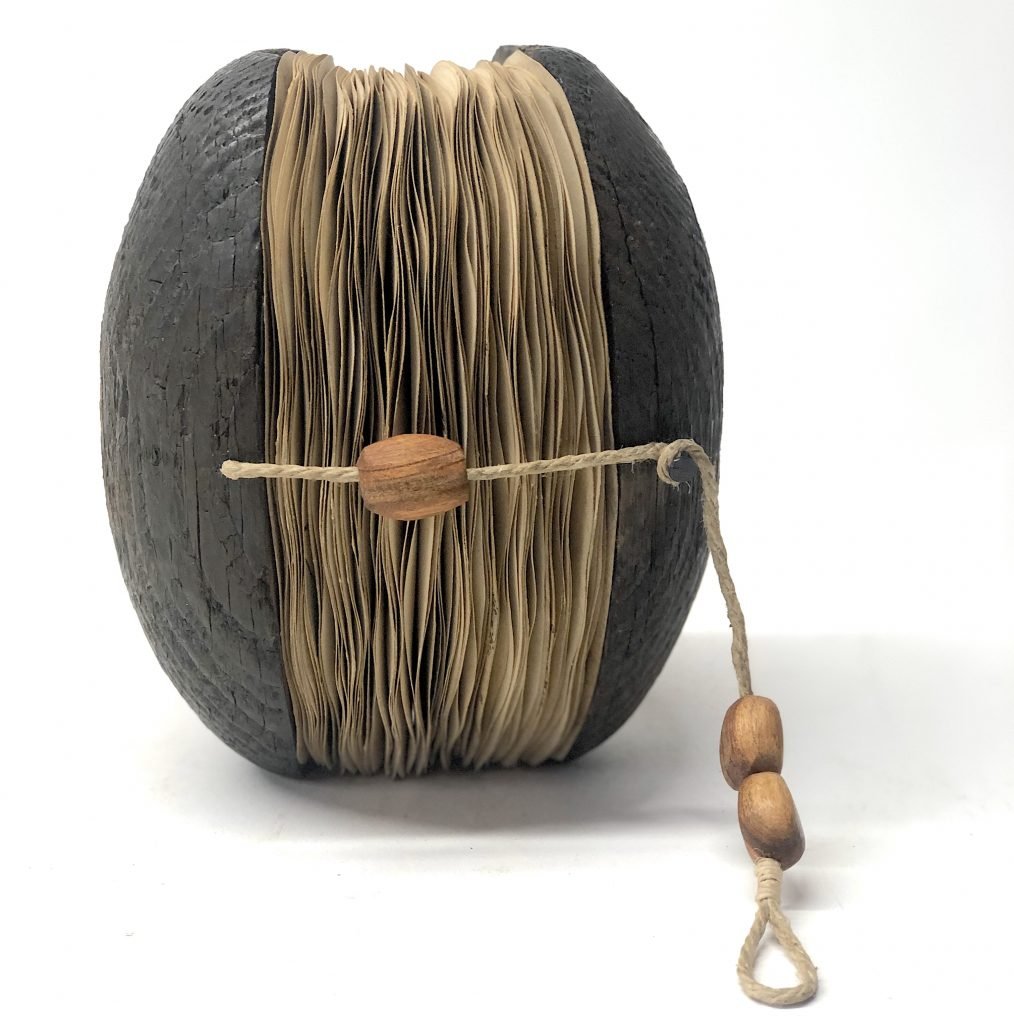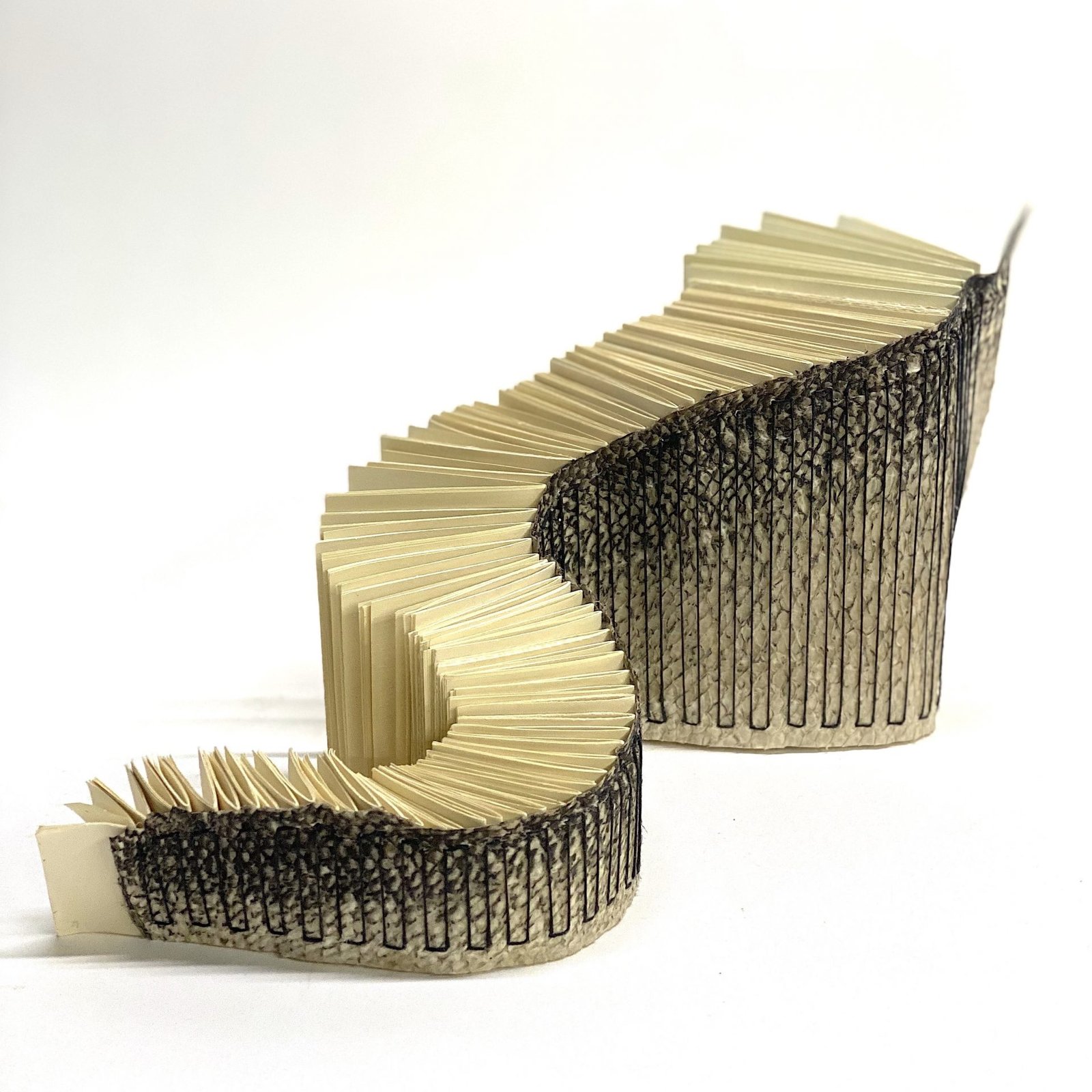In conjunction with the exhibition Quiet Places, we asked artist Debra Frances to share with us a bit about herself, her inspiration, her audience and her other projects. In this interview, Debra tells us about her love for bookbinding and all the new paths each technique opens for her.
Quiet Places will be on view at the CCBC gallery until September 29, 2022.
Debra’s work is informed by a sense of place and a response to her environment. Having spent a great deal of her life exploring the wilderness of Manitoba and Northwest Ontario, this has become key inspiration for her bookmaking. Making work from found material connects her to her surroundings and is an important way that she’s learned to process experiences and foster a sense of relationship with / belonging to the land.
Tell us about yourself: your journey, your creative process and what you’re passionate about.
For me, making books is a hybrid process, falling somewhere between the traditional definitions of art and craft. I like what mid-century English theorist David Pye once said – that a satisfying craft practice involves both the ‘workmanship of certainty’ and the ‘workmanship of risk.’ In my practice, whenever I learn and master a new bookbinding technique, it opens up a huge world of innovation and creativity. The more I learn about structural integrity, the various behaviors of paper alongside modern and historical binding techniques, the more I can stretch and play with the meaning of the word ‘book.’
I’ve always been a maker, raised in an environment where innovation and creativity were nurtured and where material skill was valued. I made my first book in 2006, a simple artists’ book for my school-aged daughter, and was immediately drawn into the world of bookbinding. I was so compelled with how the compact form of the book can house so many wide-ranging ideas.

I have come to appreciate the slowness of making books. It is often a laborious process, but one that is mindful. It has a quiet rhythm, and requires patience. You simply cannot rush. I love the finished product, but for me, the process has become just as important. It is an antidote to my busy, frequently over-digitalized life.
The relational aspect of bookmaking is a source of joy for me. Collaborations have become a large part of my practice. I’ve worked with woodworkers, ceramic and textile artists, painters, and sculptors to make one-of-a-kind objects that showcase each artist’s unique vision.
I like to say that “a book is not just a book.” It is also a symbol, a touchstone, representative of the choice to sit and explore one’s thoughts or the thoughts of others. We read. We write. We think. We relate.
What first made you want to become an artist?
I was first drawn to becoming a book artist when I made an artists’ book with my daughter. Sue Gordon, my collaborator in this exhibition, was also my daughter’s first art teacher. One day she asked if I could help her student’s bind their artwork into a book format. I thought she meant take it to Staples and have it coil bound or something like that. She laughed and gave me a book on basic bookbinding! Together my daughter and I found a structure that we thought might work. Creating that book opened up a whole new world for me. I began to see the ‘book’ differently – I saw that every part of the book could add a layer of meaning and nuance. I still have that book and even though it is not that well made, it reminds me of what started me down this crazy path of being a book artist.

What emotional response do people have when they view your work or hold it in their hands?
Books are the medium through which I communicate and books are meant to be held and explored. I hope that when people hold my books in their hands they are filled with wonder and that it takes them to a place where they contemplate the richness that books have to offer us in our lives.

What do you do when you are not creating? Does it feed your practice?
When I am not creating you can find me outdoors. I am a runner and find that most of my creative ideas come to me when I am active in some way. I love wilderness camping and being completely off the grid. Foraging is always on my mind, even in the city. I keep my eyes open for rusty objects and interesting pieces of discarded wood. I am an avid fisher person and love to explore the incredible lakes and rivers in Manitoba and Northwestern Ontario.

Manitoba-based artist, Debra Frances Plett Debra has always been a maker, raised in an environment where innovation and creativity were nurtured. She bound her first book in 2006, a simple artist’s book for her school-aged daughter, and was immediately drawn into the world of bookbinding.
Debra self identifies as a bookbinder and a book artist, acknowledging the necessary skill and technique, as well as the creative possibilities they bring.

